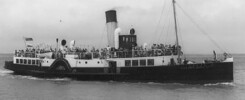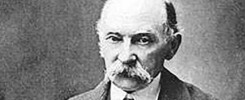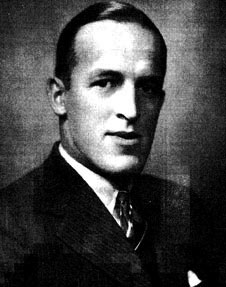
It is suprising how history sometimes jumps out of the page and a forgotten link with the past is found to be still in the present. I had read the excellent and definitive treatise by Chubb and Duckworth on the Burmese paddle steamers of the Irrawaddy Flotilla many years ago and had consigned this in my mind as a subject from the past. A subject from history. A subject for historians. All links with the present gone.
And then, one afternoon in 1999, I was browsing through a copy of The Times and out from the pages leapt an obituary for a Mr Stuart Macdonald (pictured above), the last head of this famed steamship company, who had just died in Australia at the age of 92. He had lived on for nearly half a century after the demise of his fleet, making a new life for himself, doing other things elsewhere in the world, his contribution to running this legendary paddle steamer company largely forgotten. Suddenly the past was there in the present.
Like so many servants of the Irrawaddy Flotilla Company, Mr Macdonald was a Scot, in his case from Greenock. He moved out to Burma at the age of 25 as a Shipping Assistant and by the Second World War was well on the way to a senior management position. As the international situation deteriorated it fell to him to be in the forefront of the task of burning, demolishing and scuttling the company property including paddle steamers before the invading Japanese army arrived. He and some of his colleagues were successful in this and managed to escape but only just and only after abandoning their cars and making off through the jungle and over the hills from Burma to Assam, a difficult journey which took almost a fortnight.
After the war, Mr Macdonald returned to Burma but the tide of European colonialism was running out and, in 1950, he returned to Britain having transferred what remained of the company to the newly formed government of an independent state. Without a job and income he worked packing eggs but, given his natural drive, in a short time he became manager of the company which he then expanded into the larger and more successful Stonegate Farmers Ltd. In 1968 he retired and moved with his family to Australia where he lived until his death in 1999.
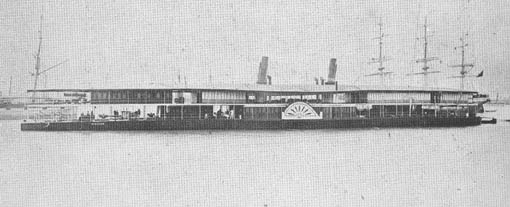
The steamers of the Irrawaddy Flotilla came in various shapes and sizes. Amongst the biggest were the grand Main Line paddle steamers like the Mindoon (pictured above) built by Denny of Dumbarton in 1885 and 310ft in length. This style of steamer generally had no bridge, the captain conning his ship from a position towards the bow on the main (lower) deck where the wheel was sited with the extended veranda above the captain’s head reserved to give the best views of the river scenery to the first class passengers taking tea on deck.
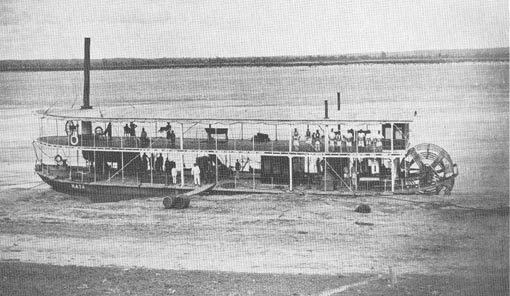
Smaller sternwheelers included the Hata (pictured above) built in 1887 for the Chindwin River services. This picture suggests that she was also a particularly cool and airy ship.
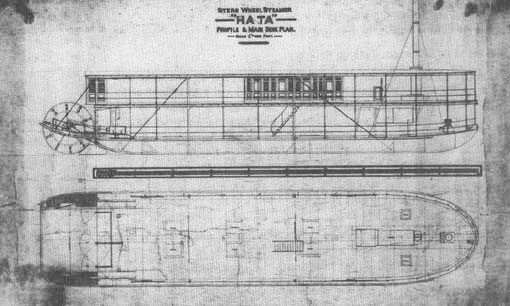
Like so many of the steamers she was also a product of Denny and, at 100ft in length, was about Kingswear Castle’s size although rather more developed in the “plenty of decks” department.
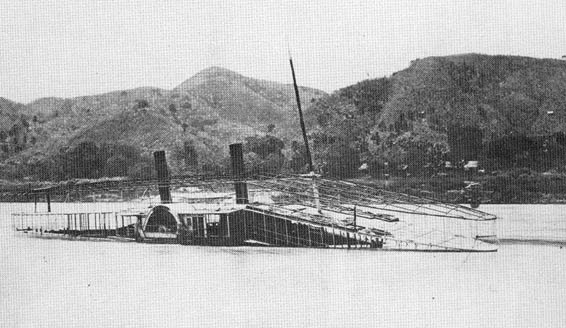
Navigation in the fast moving currents of the river, amongst shifting sandbanks and through the occasional whirlpool, can never have been easy and a number of steamers came to grief, like the Rangoon (pictured above), which became stranded and broke her back in 1873 only a year after her arrival fresh from her builders R Duncan of Glasgow. Her engines were by Rankin and Blackmore who were to provide the machinery for a British paddle steamer called the Waverley three quarters of a century later.
The larger steamers carried European, particularly British and most particularly Scottish captains, chief and second officers, chief, second, third and fourth engineers with the rest of the crew made up from various local and other Asian nationalities whilst the smallest steamers would have had a European captain and chief engineer with Chittagonians on deck and tending the engine.
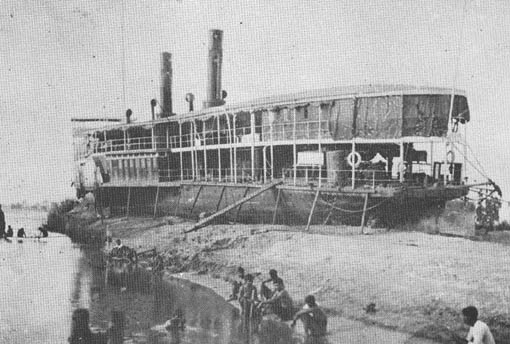
Another problem in that part of the world was going aground in the rainy season. If a captain had the misfortune to touch the bottom just as the sun was coming out, he might have had some time to wait for another set of heavy showers to fill up the river to lift him off. The Momein, (pictured above) built by Denny in 1885, ran aground on 20th July 1919 just as the rainy season ended and had to wait eleven months until 30th June 1920 when the rains came again in sufficient quantity to top up the river and float the ship off.
At the height of the success of the Irrawaddy Flotilla Company, an average passenger from Britain might have felt very much at home on the steamers. Naturally the scenery and climate were somewhat different but, with most of the paddlers built on the Clyde, with all the senior management and crew positions in the fleet being held by Europeans so many of whom were British and, more often than not, Scots, no doubt as the paddlers flapped their way through the jungle, “neeps and tatties” graced the lunch plates from time to time as the conversation danced around the waterside at Largs.
But such times have gone. After 1988 Burma re-invented itself as the Republic of Myanmar and, for some years, its borders were closed to outside visitors. My atlas (1996) tells me that the political situation was volatile and that political unrest had affected the economy.
However, the Mayanmar government now has a website promoting tourism and a revived “Irrawaddy Flotilla Co” is offering some excursions on the river. So, for the more adventurous and intrepid paddle steamer lover, a new opportunity is there to travel in the footsteps of Mr Macdonald and explore the river served by the famous Irrawaddy Flotilla of paddle steamers.
Kingswear Castle returned to service in 2023 after the first part of a major rebuild which is designed to set her up for the next 25 years running on the River Dart. The Paddle Steamer Kingswear Castle Trust is now fund raising for the second phase of the rebuild. You can read more about the rebuilds and how you can help if you can here.
John Megoran

